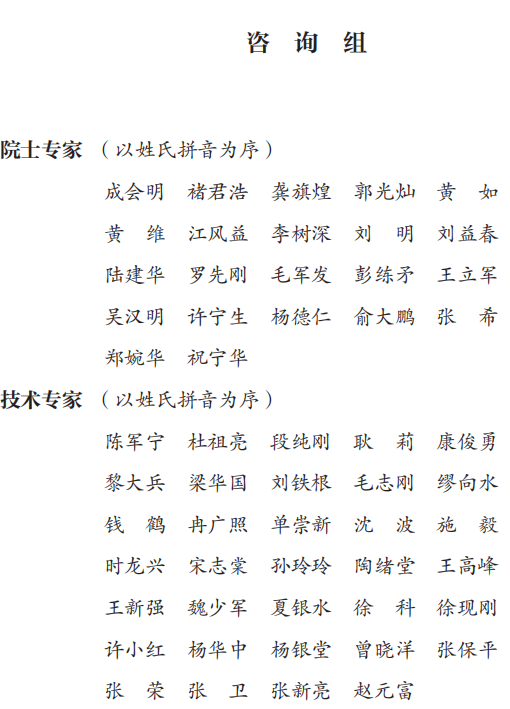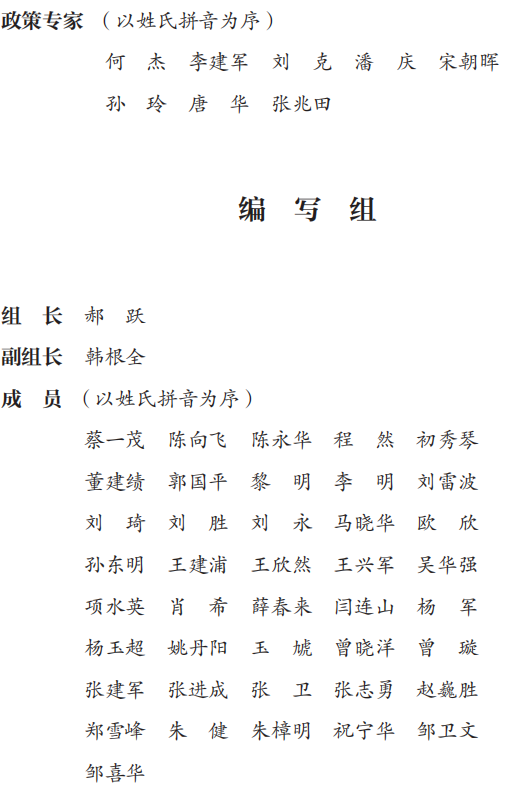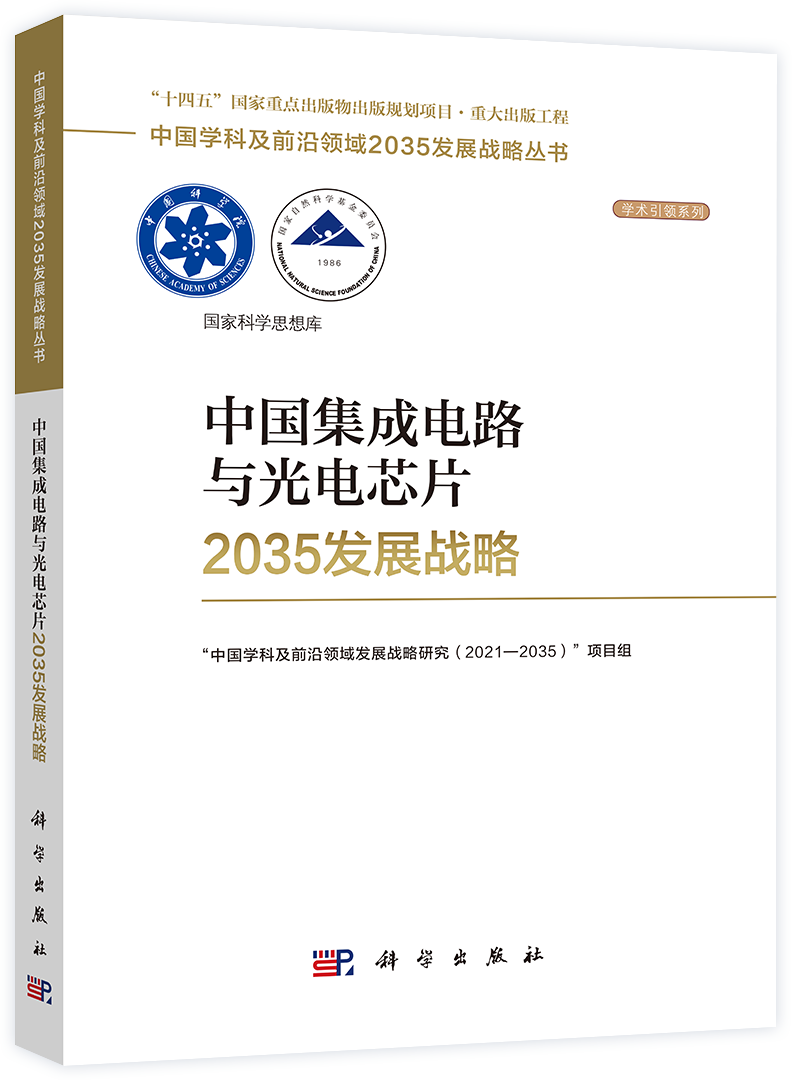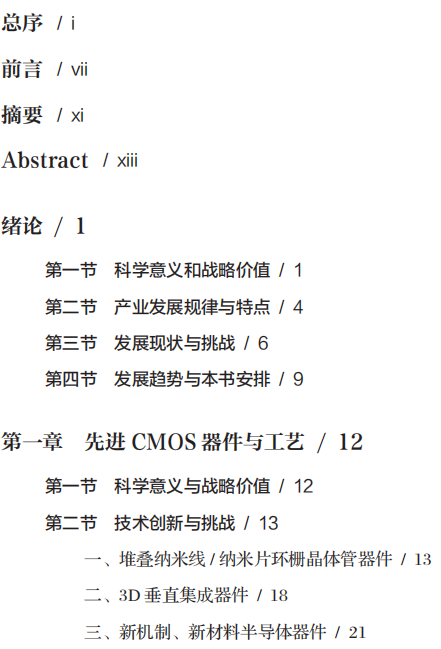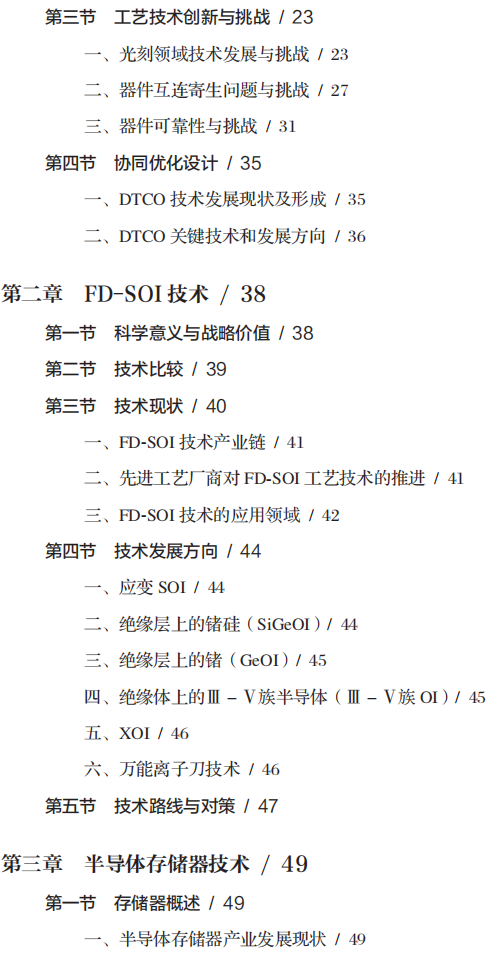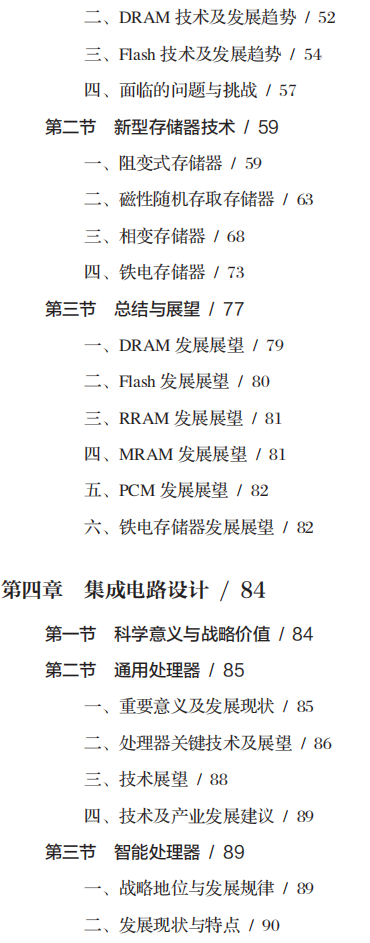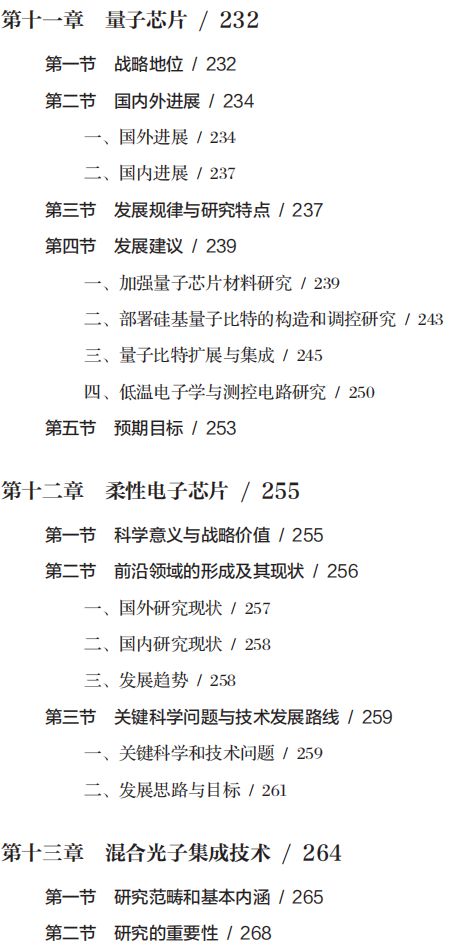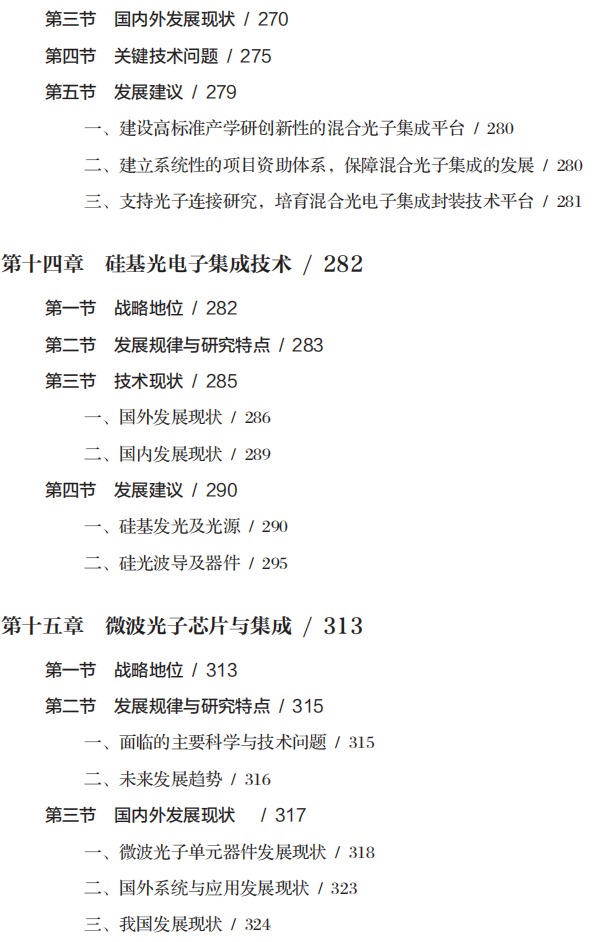集成电路自20世纪50年代问世以来,其量产技术遵循着摩尔定律已经发展至3 nm工艺技术节点和3D集成时代,芯片集成度持续增大,芯片性能持续增强。以此为基础的电子信息技术加速创新,万物互联等信息技术全面渗透到经济社会的方方面面,以集成电路为基础的信息产业成为世界第一大产业。当前,随着集成电路晶体管特征尺寸逼近工艺和物理极限,未来半导体产业发展将进入以新结构、新机理、新材料器件为核心竞争角逐的后摩尔时代。在这个大背景下,一方面,硅集成电路将继续沿着摩尔定律按比例缩小的方向前进;另一方面,诸如感存算一体芯片、人工智能类脑芯片以及颠覆性的量子芯片等技术将成为集成电路研究的新方向,从器件到架构的前沿创新支撑着微电子技术不断发展。同时,光电芯片经过长期的技术积累也已经开始在信息产业中广泛应用,尤其是通信产业中的光通信芯片已经成为极其重要且不可或缺的部分。未来,光电芯片将面向大容量、低功耗、集成化与智能化方向发展的新需求,逐步突破多功能材料体系异质集成、光电融合集成和多维度、多参量、多功能、高效率调控及可重构等关键技术。
集成电路与光电芯片技术是信息产业的基石与强大推动力,对提升国家综合实力和保障国家安全具有极为重要的战略意义。尤其是在信息技术强国对我国普遍实行严格技术禁运和打压的国际环境下,当前和今后一段时期是我国集成电路与光电芯片技术发展的重要战略机遇期与攻坚期,加强自主集成电路与光电芯片技术的研发工作,布局突破相关关键技术并拥有自主知识产权,实现集成电路产业的自主可控发展是我国当前的重大战略需求。本书针对当下集成电路与光电芯片产业的关键技术和难题,聚焦器件工艺、存储、设计、自动化、异质集成、先进封测等核心领域,研究其发展规律和趋势,并探讨实现创新突破的方向和策略。此外,在突破现有存储计算瓶颈的新器件和新架构领域,本书将从人工智能芯片技术、碳基芯片技术、(超)宽禁带材料和芯片技术,以及量子计算器件和芯片技术等方面,分析大数据和物联网(internet of things,IoT)时代下,信息技术产业新兴方向的发展趋势和可行性技术路线。在和集成电路应用紧密结合的光电融合领域,本书将从柔性光电子、混合光电子、硅基光电子、微波光电子,以及智能光电子的芯片集成及光电融合等多个方面,分析光电技术面向新信息化场景下的前沿发展动向。
面向未来芯片应用发展多元化和专用化趋势,在后摩尔时代,集成电路芯片技术将通过器件、工艺和架构的协同优化创新,逐渐从传统的冯 诺依曼范式向高算力、高密度、低成本、低功耗、多功能集成的新型芯片方向发展。此外,由于光电子集成芯片在光域强大的调控能力和集成潜力,在未来的应用中,实现数据高速传输和处理的光电子集成芯片也将是集成电路的一个重要发展方向。本书将围绕上述集成电路与光电芯片相关方向展开研究和探讨,并为我国集成电路发展实现科技创新引领和产业自立自强提供战略性参考和发展建议。
Abstract
Since the first demonstration of the integrated circuit (IC) in the 1950s, IC mass production technology, following the well-known Moore’s law, has advanced into 3nm node and 3D integration, the chip integration level continues to increase, and the chip performance continues to improve. Relied on the highly developed transistor technology, the information technology (IT) industry evolves into the electronic era, which further accelerates the application of smart systems like the internet of things (IoT), Big Data/Clouds, etc. into almost every aspect of the world, promoting the IC-based IT applications to become the world’s largest industry. Currently, as the IC transistor scaling is approaching its physical limits, the semiconductor industry has entered the “post-Moore” era which splits of its partial eforts to the exploration of new structures, new mechanisms, and new materials. On the one hand, silicon-based ICs will continue to scale downaccording to Moore’s law. On the other hand, novel technologies such as in-memory computing chips, artificial intelligence (AI) brain-like chips, and disruptive quantum chips become the future IC research directions, and the cutting-edge innovations from devices to architectures support the continuous development of microelectronics technology. Meanwhile, optoelectronic chips have been widely used in the information industry after a long period of technological accumulation. In particular, the optical communication chip has become a very important and irreplaceable product in the communication industry. In the future, optoelectronic chips will face more challenging requirements in terms of larger capacity, lower power consumption, more complicated integration and more intelligent. Breakthroughs are necessary to realize key technologies such as multifunctional heterogeneous integration, optoelectronic integration, and multi-dimensional, multi-parameter, multi-functional, high-efciency modulation, and reconfguration.
The IC and optoelectronic chip technology are the cornerstones and powerful driving force of the information industry, and also play a strategic role in comprehensive national power and national security. In the current stage and the near future, China is in a critical period to develop its logic and optoelectronic IC technology, especially when the global environment is not welcoming international collaborations. Consequently, China has to gradually and strategically develop its IC industry chain including the intellectual properties of IC technologies, equipment, supply chains, packaging and testing supports, etc. To solve the key technological issues in the current IC and optoelectronic chip industry, this strategy book studies the development rules and trends in the felds including device manufacturing technology, storage technology, design and automation, heterogeneous integration, advanced packaging and testing, accompanied by the in-depth discussion on the direction and methods to achieve innovative breakthroughs in these fields. In addition, in the fields of novel devices and new architectures which outperform the existing storage and computing capabilities, this book will analyze their development trend and feasibility for the Big Data and IoT-related areas like the artificial intelligence chip technology, carbon-based chip technology, (ultra) wideband gap materials and chip technology, and quantum computing devices and chip technology, etc.In the feld of optoelectronic fusion technology, which is closely related to IC technology, the book will analyze the cutting-edge development trends in the new IT application scenarios from the aspects of flexible optoelectronics, hybrid optoelectronics, silicon-based optoelectronics, microwave photonics, as well as chip integration of smart photonic chips and fusion for optoelectronic chips.
With regard to the diversification and specialization of chip applications in the post-Moore era, the traditional IC technology will gradually migrate from the von Neumann architecture to the more advanced architectures with higher computational power and density, lower cost and power consumption, multi-functions with design optimization and device innovations. In addition, due to the strong regulatory capacity and integration potential of optoelectronic chips in the optical area, optoelectronic chips that can realize high-speed data transmission and processing will be an important development direction in future applications. The book will carry out investigations and discussions on the above-mentioned topics related to ICs and optoelectronic chips, and meanwhile, provide a strategic reference and guidance for our nation to achieve a leading technological position in the international IC industry.
